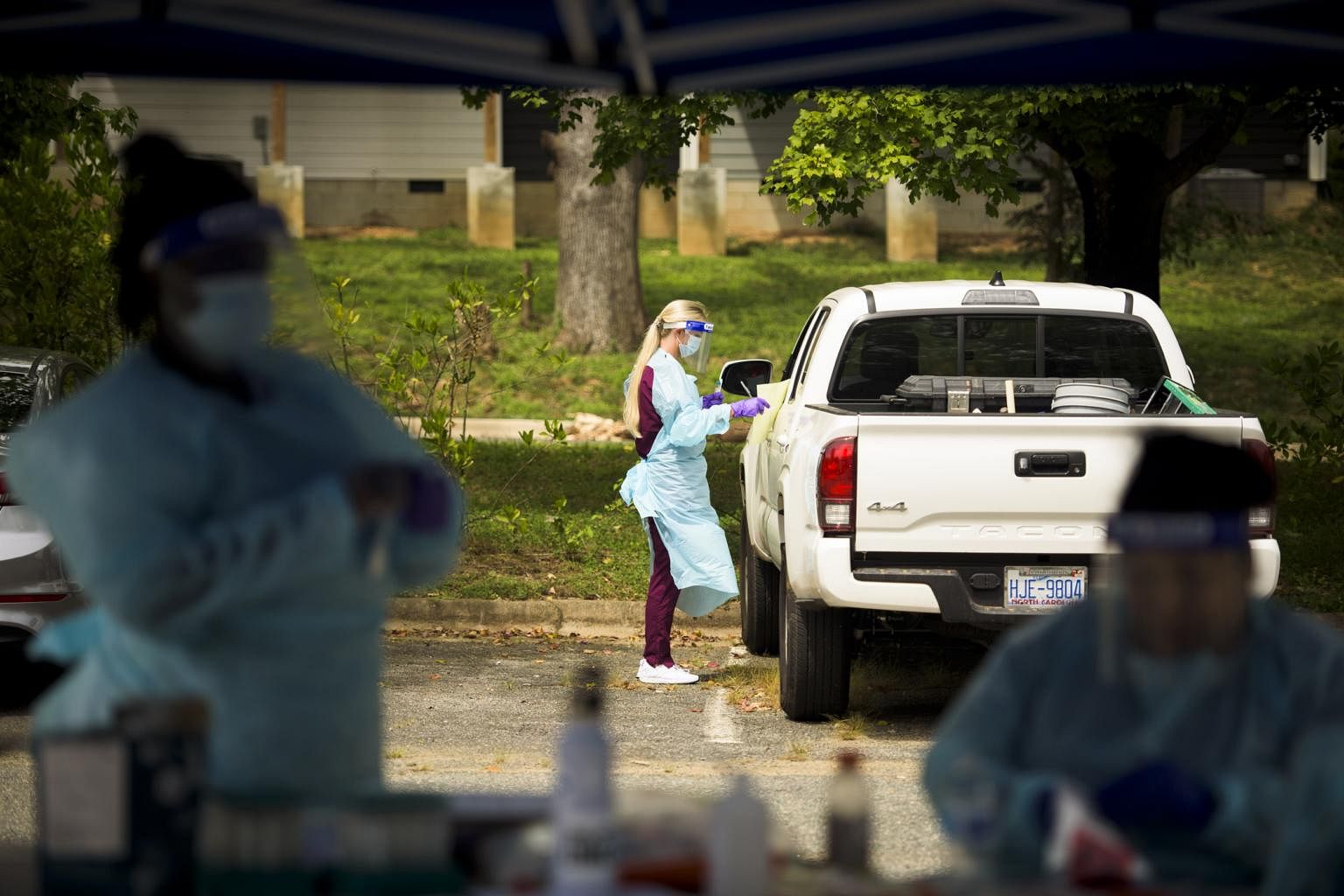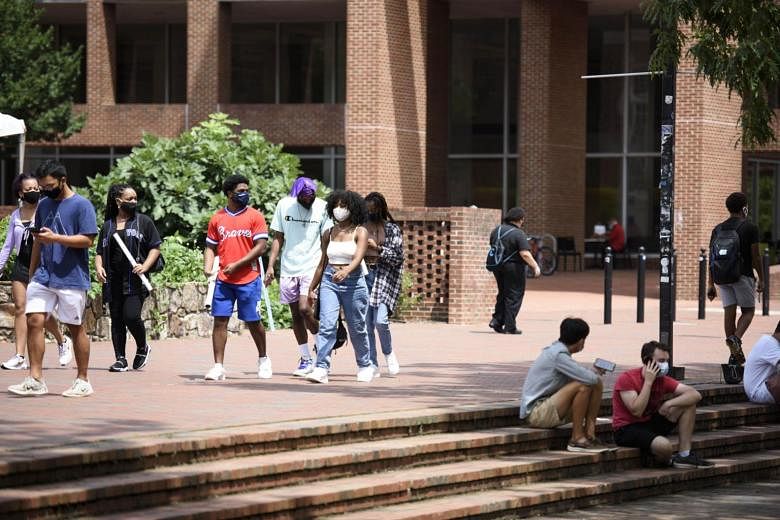NEW YORK (NYTIMES) - As college students and professors return to campus in the midst of a pandemic, coronavirus cases are turning up by the thousands.
A New York Times survey of more than 1,500 American colleges and universities - including every four-year public institution, every private college that competes in NCAA sports and others that identified cases - has revealed at least 26,000 cases and 64 deaths since the pandemic began.
Many colleges have reported major spikes in recent weeks as dorms have reopened and classes have started.
The University of North Carolina at Chapel Hill sent most undergraduates home after clusters popped up in campus housing.
Notre Dame delayed in-person classes as students tested positive by the dozens, then the hundreds.
Clemson, Baylor, Louisville and dozens of other Division I universities reported cases in their athletic departments.
And at Iowa State, aggressive testing of students moving into dorms turned up scores of cases.
This data shows where the virus has been identified over the course of the pandemic, not necessarily where it is prevalent now.
The Times has counted more than 20,000 additional cases at colleges since late July.

Many of those are new infections from this month, but others may have emerged earlier in the pandemic.
Some universities just started reporting data, and The Times contacted others for the first time in August.
Because colleges report data differently, and because cases continued to emerge even in the months when most campuses were closed, The Times is counting all reported cases since the start of the pandemic.
With no national tracking system, colleges are making their own rules for how to tally cases.
While this is believed to be the most comprehensive survey available, it is also an undercount.
Among the colleges contacted by The Times, many published case information online or responded to requests for case numbers, but at least 600 others ignored inquiries or refused to answer questions.
More than 150 have reported zero cases.
Given the disparities in size and transparency among universities, this data should not be used to make campus-to-campus comparisons.
Some colleges remove people from their tallies once they recover. Some only report tests performed on campus. And some initially provided data but then stopped.
There are logical explanations for why some universities have so many cases.
Many of them, including Central Florida, Texas A&M and the University of Texas at Austin, have some of the country's largest student bodies.
Others with high case totals, including the University of Texas Southwestern Medical Centre, the University of Connecticut and the University of Alabama at Birmingham, count students or employees who work in health care and are at greater risk of exposure.











